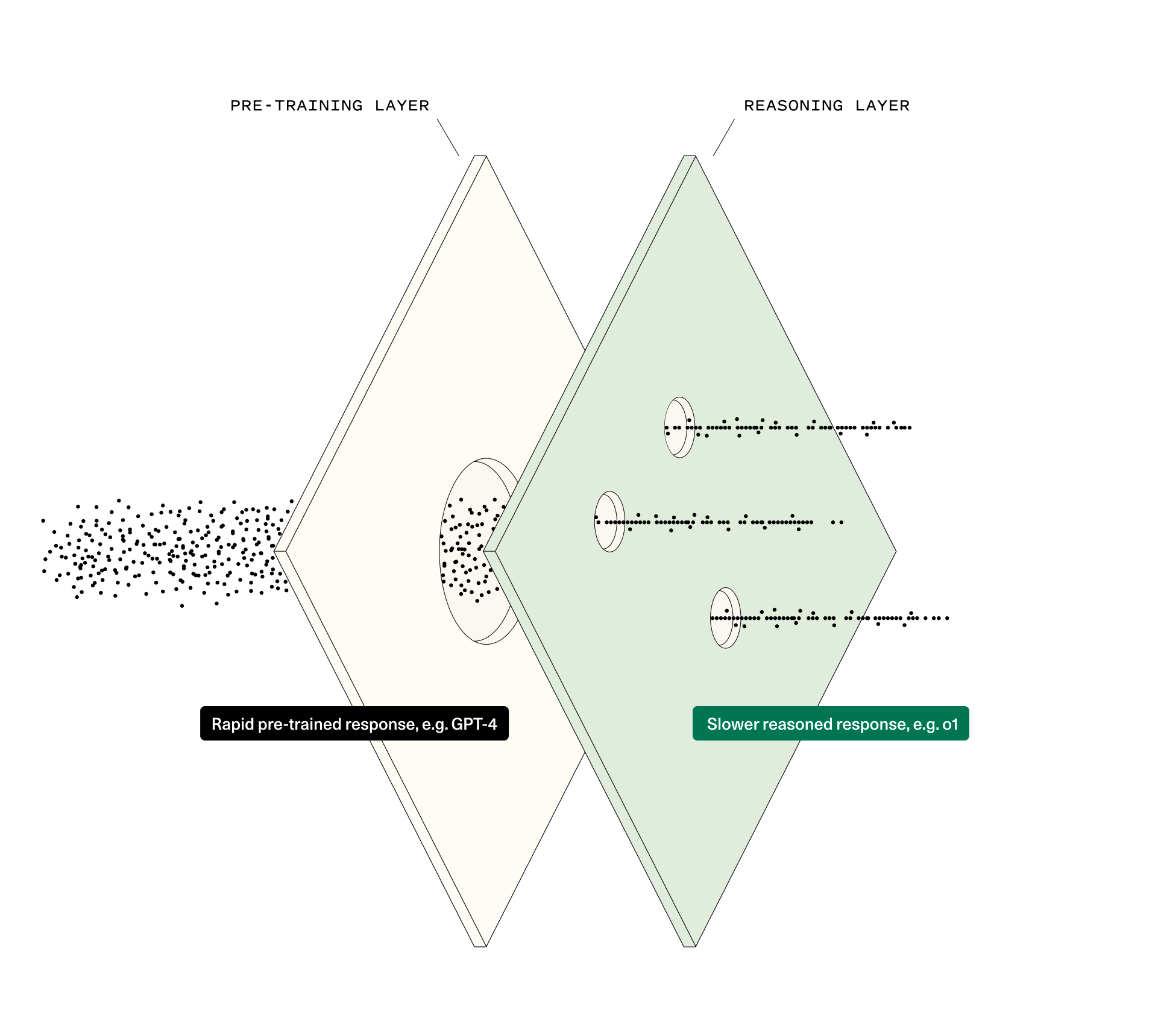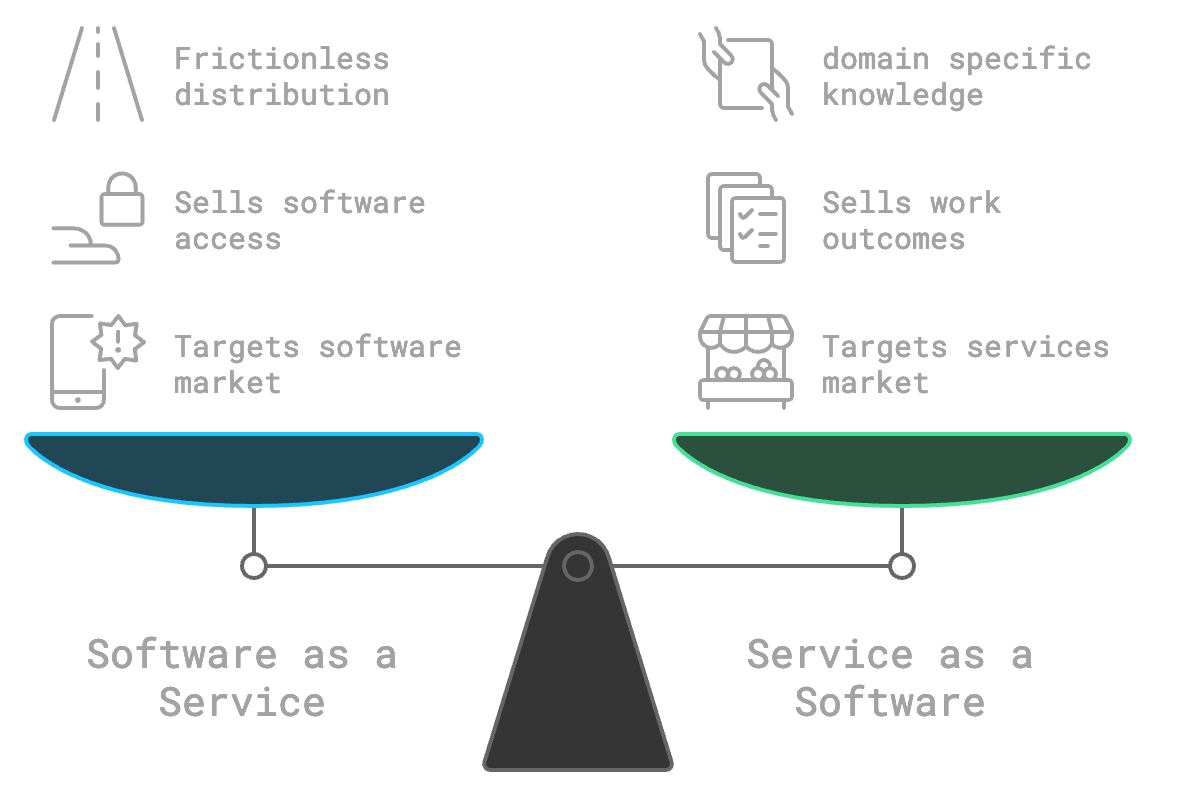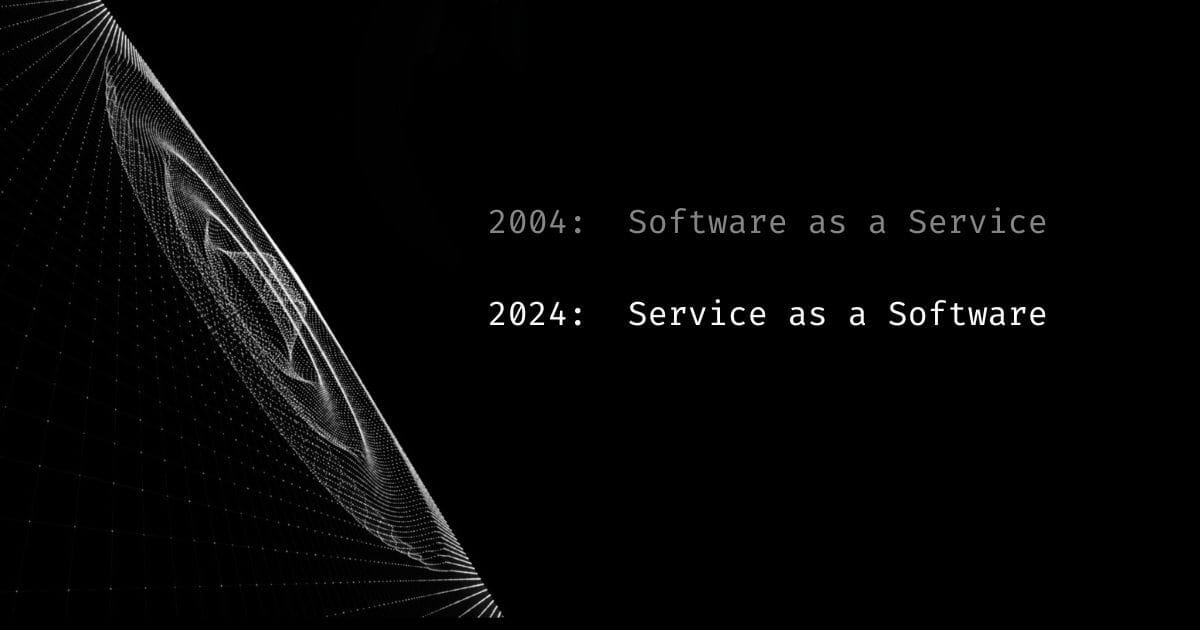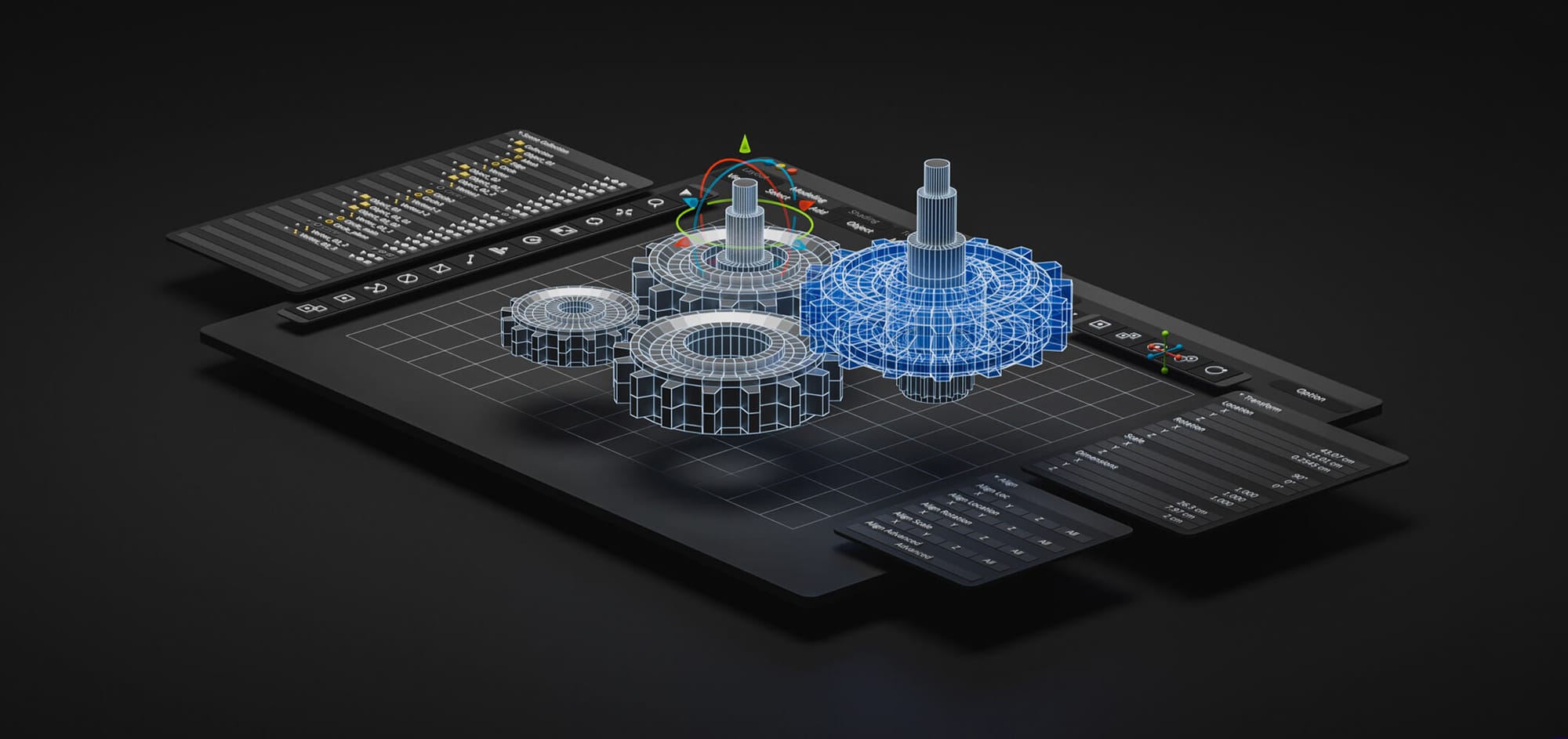There’s a big shift happening in the tech world right now, and it’s something you should know about. We’re moving from the well-known Software as a Service (SaaS) model to a new approach: Service as a Software. It might seem like just a play on words, but there’s much more to it than that.
So, what’s happening right now?
2004: Software as a Service
— Brian Halligan (@bhalligan) April 19, 2024
2024: Service as a Software
h/t - everyone
co-founder hubspot
In simple terms, software isn’t just helping us do our work anymore; it’s starting to do the work for us.
This post talks about the next AI wave: agentic reasoning applications, which I believe will be the trend for 2025. Rather than focusing on the new technology itself, I want to connect the dots, understand the context, and explore what this means for the current state of the SaaS industry.
"system 1" vs. "system 2" thinking
AI is evolving to handle more complex, reasoning-based tasks, which is a significant development from just processing general questions.
A few days ago the growth people from sequoia published this article where they come up with layers of capabilitieS:
This leap from pre-trained instinctual responses (”System 1”) to deeper, deliberate reasoning (“System 2”) is the next frontier for AI. It’s not enough for models to simply know things—they need to pause, evaluate and reason through decisions in real time.
In short:
• System 1 thinking: Fast, intuitive, and based on pattern recognition. This is about recognizing patterns from large datasets and making quick predictions—much like how traditional AI models operate.
• System 2 thinking: Slow, deliberate, and logical reasoning. This involves “stopping to think” before responding, requiring more computational resources at inference time. It’s about reasoning through complex, novel situations.

Most AI until now has been operating on System 1 thinking—quick and efficient but not deeply thoughtful. The exciting part is that AI is now moving into System 2 thinking, where it can “stop and think” before responding.
The Real-World Challenge
The real world is messy and complex. One-size-fits-all AI models simply won't cut the depth and specificity of real-world problems. Each industry, and even each task within an industry, has its own unique challenges.
Let's take a simple example, imagine an 🤖 Hotel AI Customer Bot:
The AI instantly retrieves the answer from its knowledge base and responds without much thought.

vs...
↳ The AI pauses to assess the situation, pulling up the guest’s booking details and preferences.
↳ It identifies available room options, cross-referencing the guest’s status (e.g., loyalty tier or special requests) to offer an upgrade if possible.
↳ It checks for meeting room availability, suggesting an alternative space if the guest’s room is still unavailable.
↳ If any setup or amenities (like a projector or coffee service) are needed, the AI coordinates with staff in real-time, tracking their progress.
↳ Finally, it confirms with the guest, providing a personalized solution rather than a generic response.

Now AI is tackling complex tasks that before required human problem-solving.
While we’re not fully there yet, this is the frontier being built right now—and it’s where the Services industry will be upgraded.
The Immediate Opportunity for SaaS Companies
Here’s where it gets exciting for those of us in the SaaS world:
1. Targeting the Services Market
That means the addressable market is not the software market, but the services market measured in the trillions of dollars, far exceeding the $350 billion software market.
2. New Business Models
From Selling Software to Selling Work: Instead of charging per user or seat, we can charge based on outcomes or tasks completed.
In the long term, this also means changes in valuations, investments and how we run tech companies nowadays.
3. Product and Development Implications
Developing systems will focus on improve domain-specific reasoning, tailored to the unique needs of different industries.
All industries are about to be re-engineered.
In summary:

What’s Next?
In Part Two, I'll dive deeper into:
• Business Models: How this shift is changing the way we approach value delivery and revenue generation.
• Pricing Strategies: Exploring new pricing models based on outcomes and services rather than just subscription or usage-based.
• Real-World Examples: Showcasing startups that are already making this transition and what we can learn from them.
stay tuned!
If you're an outsider, subscribe to my newsletter to get Part Two delivered straight to your inbox as soon as it’s released.

saas-HQ
Resources and bite-sized case studies to grow your SaaS. bi-weekly.





